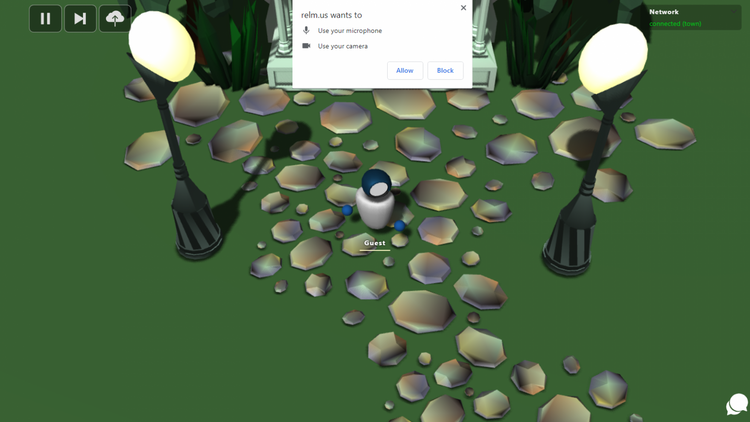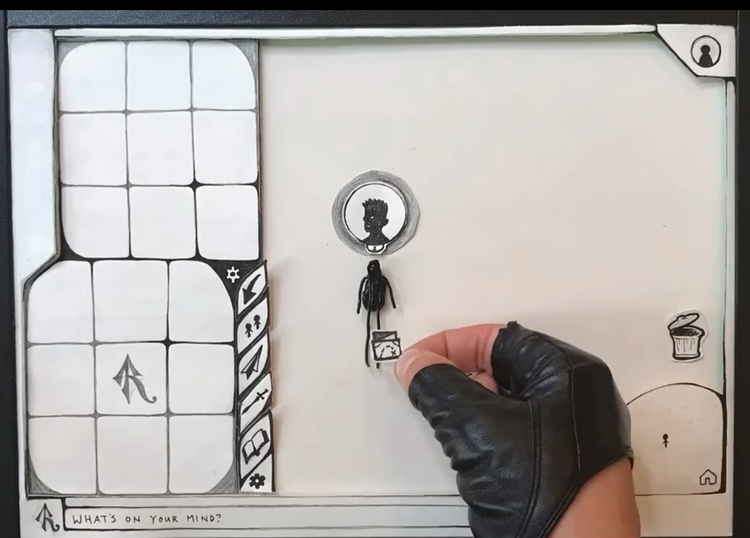4 Audio Modes to Give Everyone Audio Autonomy in Relm

Our team had an awesome brainstorming session at the beginning of this month around how audio/video could work in future. There were some obvious issues we wanted to address.
Audio Issue One: Autonomy over your own Ear Drums
What you hear in your ear buds matters. It can be the difference between a regulated state and a dysregulated state – on either end of the experience (i.e.: hearing nothing when you should be hearing something, or hearing too much and your ears are ringing). It can even impact someone whose background noise affects other participants, simply because of the way technology currently condenses sounds for transit across the internet and into our earbuds at unrealistically disproportionate sound levels.
Switching between proximity-chat/world-chat
We used to have a button that could switch the audio mode from hearing everyone in a relm to “hear nearby only.” The limitations of this version became clear as we tested it out.

It’s unclear what the button does, who should do it, and if/when someone’s autonomy should be taken away (e.g. if they are privately chatting in a group, and then the presenter switches to world-chat mode so everyone can hear, this may be an unexpected privacy breach).
Audio Issue Two: Visual cues help you determine where to put your attention
It’s difficult visually to know if/when I have private communication with another person. The environment does not suggest anything. Nor does it indicate others are in private chat with one another, making interruption commonplace.
Audio Issue Three: Conversations are more meaningful in smaller groups
There is no way currently to have a “main meeting” while others have mini “break-out sessions” unless you actually leave the relm for another space. This should be as intuitive as walking up to someone and tapping them on the shoulder.
We’re Designing 4 Audio Modes:
We think there are 4 dynamic modes we can use to facilitate gentle and intuitive audio/video chat among more than 30 people:
First mode: Setting for entire relm
Except in the narrow case of an Exhibition Hall-type relm, we think the proximity chat is not very useful (see other, more useful dynamics below). We would like to change the “proximity chat” to be a relm Setting, rather than a button at the bottom of the screen. This means we would design relms with the specific intent to be an “Exhibition Hall” and turn on the “Proximity Chat” setting in this narrow case.
Second mode: Click on someone to private chat
Make 1:1 chat simple: click on someone, and it will ask if you want to have a private aside with them. The other person can consent. Now you are talking together, privately. There will perhaps be a line or other visual indicator that the two are engaged in private chat.
Third mode: Built-in group chat locations
Make breakout sessions easy to understand based on the environment: If there are chairs in a cluster together, or arranged around a table, or a group of yoga mats, the participant can click on a chair/table/yoga mat and join a “breakout session”. Only people who are also seated in the cluster will be able to see/hear each other. If someone wants to leave, they simply get up and go.
Fourth mode: Default – hear the whole relm
Public chat remains the default: everyone in a relm can see/hear each other unless one of the above dynamics overrides. This way, everyone feels more connected and it’s safe to assume you can hear/see each other unless there are technical difficulties.
Here is a short idea video going over possible relm audio modes:
In Summary
Basically what this would mean is that by default everyone can hear each other throughout the whole relm unless you click on someone and you both agree to private chat, or you click on “chairs” or “predesignated grouping areas” to join group chats. The exception would be if a host has toggled proximity chat for that relm for all guests because this suits the purpose of the gathering.


